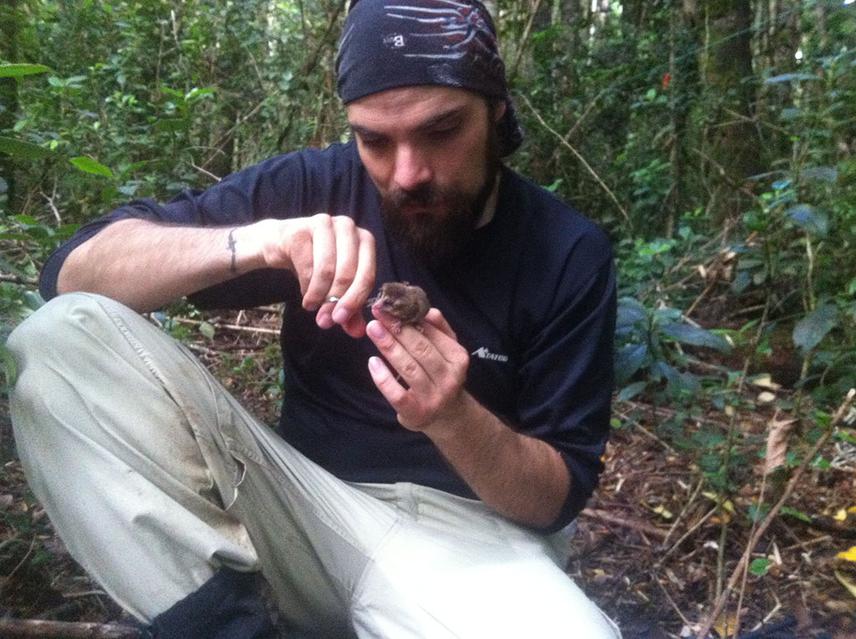Francisco E. Fonturbel
Other projects
16 Jan 2014
Tracking the Monito del Monte (Dromiciops gliroides) on Native and Transformed Habitats: Consequences for Seed Dispersal
There are three aims for this project:
(1) estimate D. gliroides abundances in degraded and non-degraded habitats.
(2) Evaluate the effects of habitat degradation on frugivory.
(3) compare natural selection gradients on the mistletoe related to the fruit removal by D. gliroides.

The monito del monte (Dromiciops gliroides) is an endemic arboreal marsupial of the South American temperate rainforests and the only living representative of the Microbiotheria order. This species is acknowledged as an important seed disperser for at least ten native plant species, but it is assumed to be the sole dispersal agent of the endemic mistletoe Tristerix corymbosus. Such mistletoe constitutes a food source for many species, especially for the hummingbird Sephanoides sephaniodes that is an important pollination agent for many native plant species. Anthropogenic habitat degradation is significantly transforming native habitats, but less attention has given to its consequences on natural populations and its ecological interactions, and especially for those plant-animal mutualisms that are mandatory for the reproductive success of many plant species. I propose to examine such consequences on a heterogeneous habitat mosaic at three levels: on D. gliroides populations, on the seed dispersal interaction with T. corymbosus, and on the selective forces that the disperser exerts on the plant.
On the one hand, the expected results will be used to support or update D. gliroides´ current conservation status, based on its tolerance to habitat degradation (considered as a major threat for this species according to the IUCN). On the other hand, having an appropriate understanding of the eco-evolutionary consequences of habitat degradation on D. gliroides and the mistletoe that it disperses will give crucial information about the ultimate fate of both species (the marsupial and the mistletoe) in anthropic landscapes. Also, it will indirectly allow making inferences about the fate of other related species that feed on the mistletoe or require the marsupial seed dispersal services. Additionally, this research will give crucial information about the actual importance of this endemic marsupial as a regeneration agent at degraded forests.